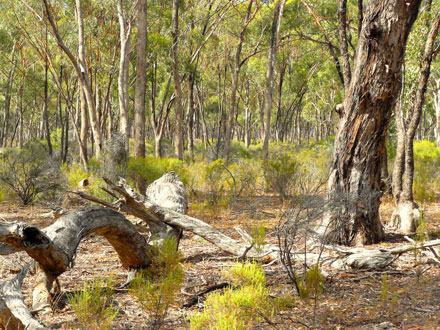
Forestry experts have described as “a weak rant” and “gross misrepresentation” arguments by Fairfax economics editor Ross Gittins that the native forest industry in Central Gippsland is uneconomic and deprives Melbourne of huge amounts of water through logging of water catchments. Mr Gittins, in a column last week in the Sydney Morning Herald and The Age, used a study by the Fenner School of Environment and Society at the Australian National University to justify his stance. Source: Philip Hopkins for Timberbiz
Mr Gittins argued that native forestry was a declining industry, employed few people and was environmentally damaging.
Dr Leon Bren, a former researcher and lecturer in forest hydrology at Melbourne University, said logging may have an impact on “runoff” (better streamflow) in regenerating mountain ash, but the difference was not very large.
“The difference doesn’t seem to exist in other species. Since the area of logging is not large, the effect is pretty minuscule and probably undetectable,” said Dr Bren, who has written and co-edited books on forest hydrology and catchment management, as well as contributing articles to science journals on the subject.
“Given time this can be quantified, but no one seems to want to do this.”
Author and forestry consultant, Mark Poynter, said only 12% of Melbourne’s 157,000 hectares of forested water catchment was available for timber production – about 0.1% was harvested annually. It was limited by constraints imposed on how much can be harvested from various sub-catchments.
“Gittins wrongly says that only the Thomson catchment is allowed to be logged. In fact, just 8200ha of the 47,000ha Thomson catchment is available for use, but there are a further six smaller sub-catchments where small portions are available for use,” he said.
In the past decade, the total area of annual harvesting had fallen from about 300ha per year to 200ha per year, he said.
Dr Bren, who is an Honorary Fellow at Melbourne University, said the Fenner computations of water loss from harvesting assumed that the forests being logged are “old growth”, which they are not.
“The Gittins paper produces no figures but usually the results of economic analysis assume water values, wood values and rates of compound interest since long time periods are involved,” he said.
“Most hopelessly overvalue the water, undervalue wood products, and use rates of interest that somehow suit their argument. In general the forest operations have no detriment to tourism since tourists usually don’t go to these areas.”
Dr Bren said the article was a weak rant with no statistical base – “no real original thought, more a parroting of rather stale ideas”. The Fenner report did not appear to make any examination of wood values.
“If one does an optimal analysis, one would find an ‘optimal combination’ of wood and water values, which may depend on the rate of interest adopted,” he said.
“Certainly a rant which does not include data is not what one expects from an economist.”
Dr Bren said that all forests, irrespective of age and type, tended to be quite heavy uses of water. The earlies forest hydrology research found that the best-yielding slopes for water were those with light cover of forest – mainly bracken and wattle from the 1939 fires.
“Thus, if water is that valuable a product, then perhaps one might ponder having forest as a cover,” he said. The recent large fire on the western edge of the Thomson Dam would have a substantial effect on both inflows and water quality.
“If water is that valuable then a cynic might suggest that a good plan might be to suppress tree regeneration, and leave the slopes bracken-covered to enhance water yield but give erosion cover,” he said.
Mr Poynter said the Gittins reliance on a 2016 ANU study grossly understated the socio-economic value of the Central Highlands timber industry. It considered only forest harvesting and log cartage, while ignoring the far greater impact outside the forest in log processing, wood products manufacture and retail.
“This is akin to ascribing the value of the wine industry only to the growing and harvesting of grapes,” he said.
A 2015 Deloitte Access Economics analysis of the Central Highlands timber industry found that it was employing more than 2000 workers and generating $570 million per annum. This included the industry from its entirety through to manufactured wood products.
Mr Poynter said Mr Gittins also grossly misrepresented supposed industry subsidies and imagined a transition to non-existent plantations.
“It neglected to explain how the vastly greater social and environmental impacts of future bushfires will be mitigated if we no longer have rural industries whose workers and their families are our volunteer fire-fighters,” he said.





